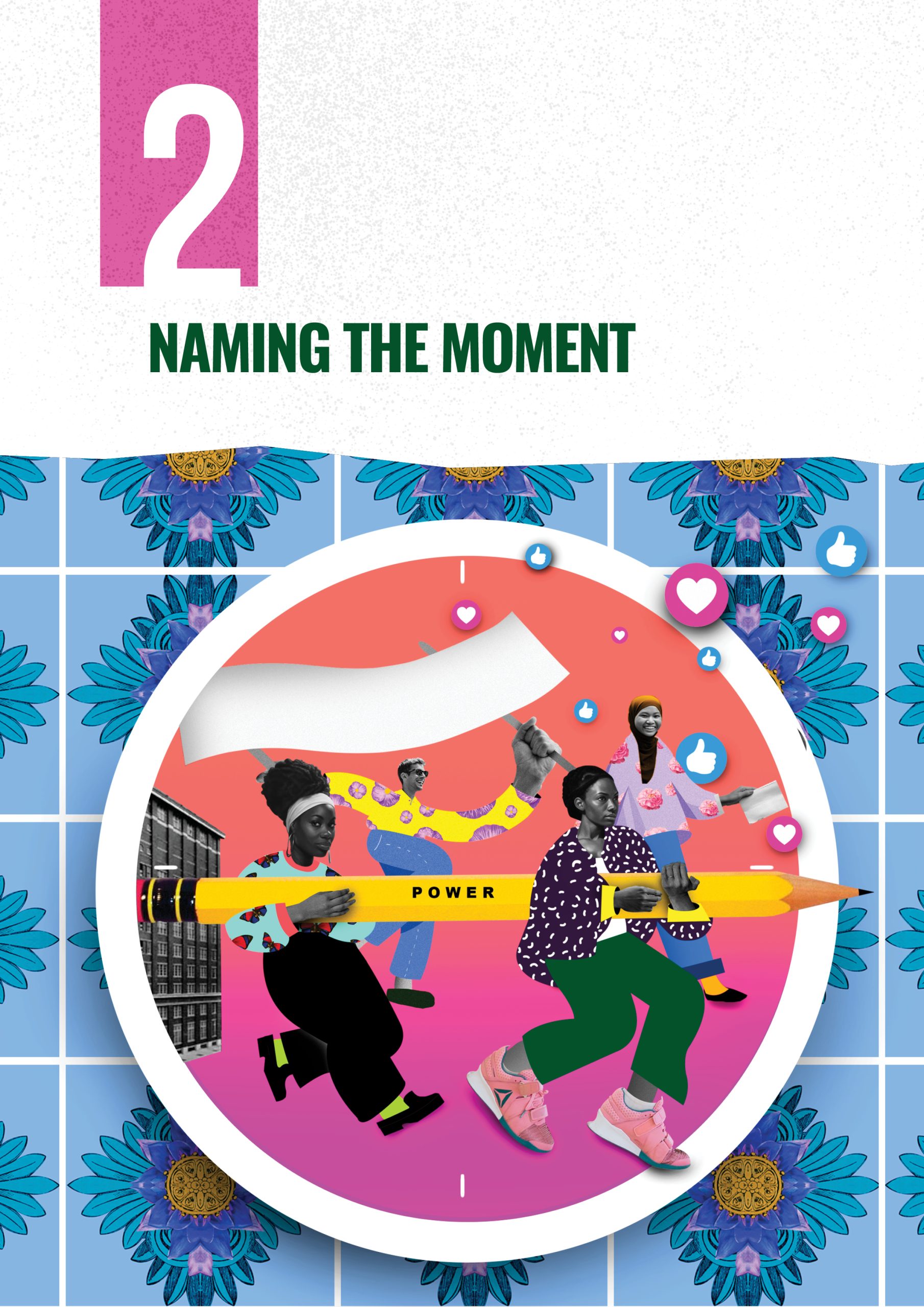Chapter 2: Naming the Moment

Download this chapter A4 size or Letter size.

The first step in understanding power dynamics is to name the moment.2 Building on Chapter 1: Getting Started, we situate ourselves and our change work in history.
- What is happening now – looking at the big picture – and how did we get here?
- What is creating upheaval, violence, and inequity in our contexts?
- How do these forces fit within larger global trends?
- How did we get here?
- Where do we see the possibilities for organising, resistance, and transformation?
- What gives us hope and keeps us going?
This chapter guides an initial analysis of the contexts and larger trends – the major global-to-local patterns and reconfigurations shaping the current moment – and explores the historical roots and lessons of struggles.
Our histories of struggle are often glossed over or hidden by the official versions that we learn in school. The recovery of our own histories of resistance and transformation is crucial for power-building and connects us with the ideas and people who fought for justice before us.
Trends are global, but distinct histories and cultures shape the local contexts and specific problems exacerbated by those trends. Gender, race, class, ethnicity, sexuality, age, and location shape our different contexts and how we experience them. Our analysis integrates the personal, political, cultural, and organisational dimensions of power and change, and this helps us plan and organise strategically.
 This chapter is divided into four themes. Each theme offers one or more activities.
This chapter is divided into four themes. Each theme offers one or more activities.
Theme 1: Between Crisis and Mobilisation
How is the context changing? How are people responding to upheaval and a deepening sense of inequity, injustice, and inaction? We analyse how crises shape situations, for example through increased attacks on dissent and activists. We name the signs of resistance and transformation that challenge the status quo and generate a sense of hope and possibility. We notice how these patterns interconnect and impact people differently.
Theme 2: Global Patterns, Systemic Shifts
What are the global trends driving the challenges we face as well as the possibilities for change? We take a deeper look into the systemic shifts underway, naming and categorising the sweeping forces impacting our lives beyond our national context. We come to understand these forces as disputes about what and who matters, and about the present and the future.
Theme 3: Learning from History
How did we get here? What are the roots of current structural crises and people’s mobilisations? Creating a timeline of key events over the last decades, we trace the historic roots of crises and upheaval and reconstruct stories of how our ancestors fought for justice. We explore the zigzag push and pull of different forces seeking to rebalance, resist, or gain power.
Theme 4: Cracks Where the Light Comes In
Even when we are overwhelmed by what we are up against, there are still possibilities – no matter how small – to connect and build solidarity for a different future. As people mobilise to end the injustice and reshape broken systems across the world, we reflect about where change is happening and what sustains our hope and energy.
We stand on the shoulders of our ancestors but rarely pause to learn from their efforts to confront and change power. Much of that history is not easily accessible and relies on our collective memories and stories.
______________________________________________________________________________
1 Lopez Cruz, Marusia and Aura Lolita Chavez, Collective Protection to Defend Territory; Defense of Territory to Protect Life.
2 Barndt, Deborah, Naming the Moment: Political Analysis for Action: A Manual for Community Groups. The Free Library. 1990 Canadian Dimension Publication, Ltd. 18 Apr. 2023
3 Klein, Naomi, This Changes Everything: Capitalism vs. the Climate. New York: Simon & Schuster, 2014.
